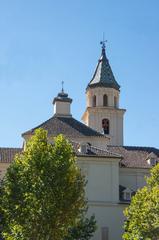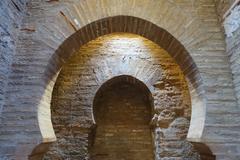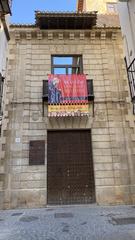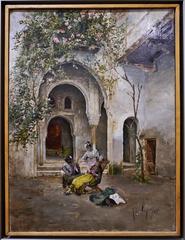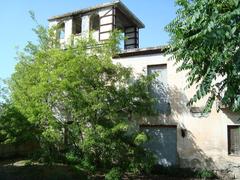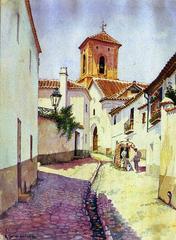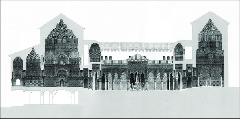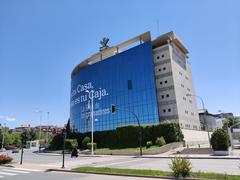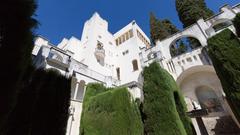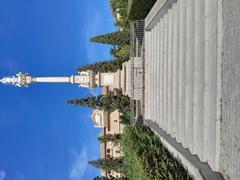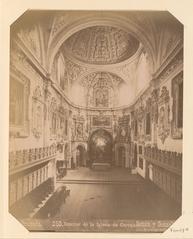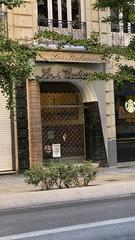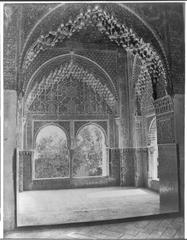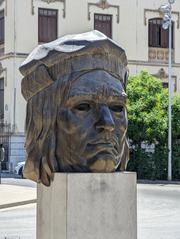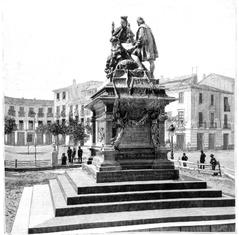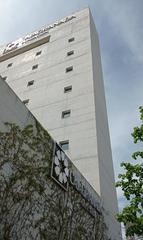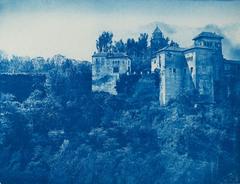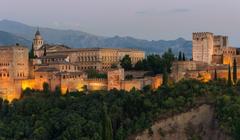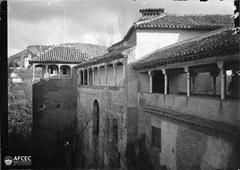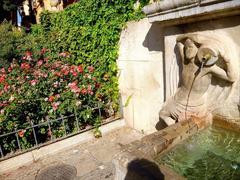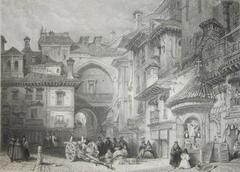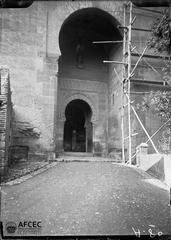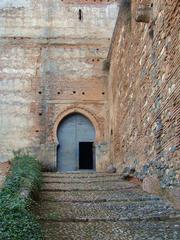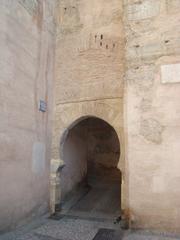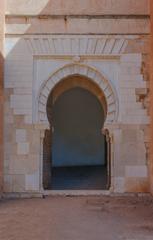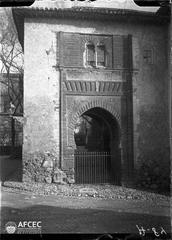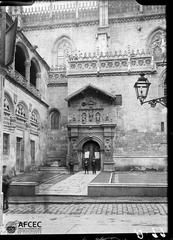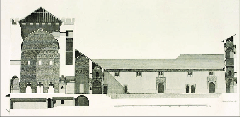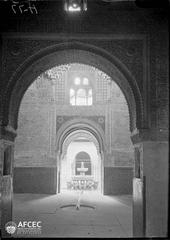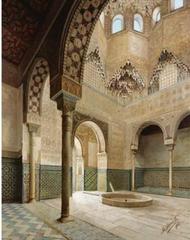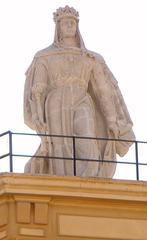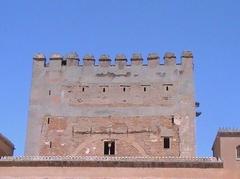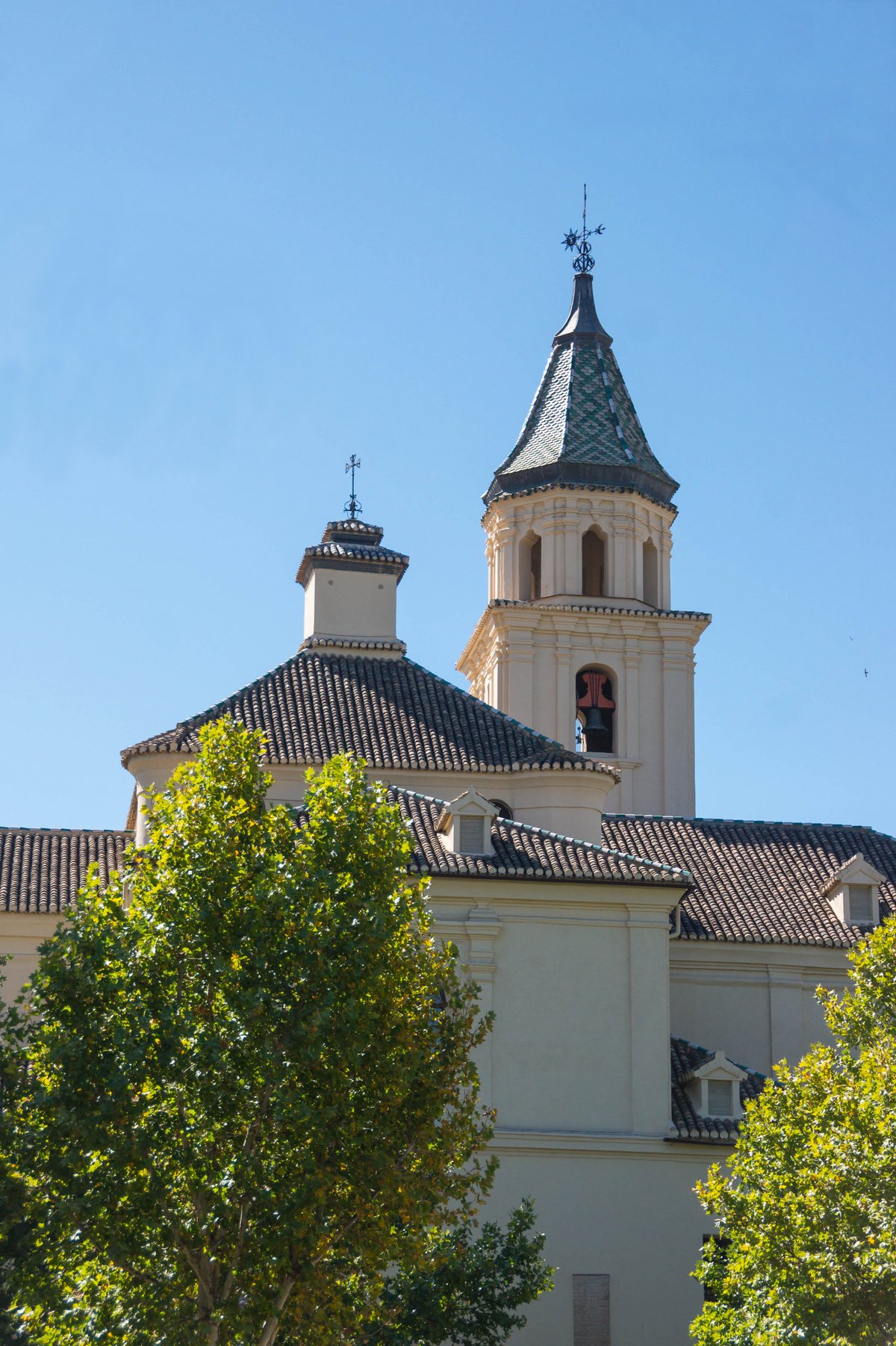
Iglesia De San José De Calasanz Granada, Spain: Visiting Hours, Tickets, and Travel Guide
Date: 14/06/2025
Introduction
The Iglesia de San José de Calasanz in Granada stands as a compelling testament to the city’s dynamic cultural, religious, and architectural history. Nestled along the Genil River and within Granada’s historic core, this church invites visitors to explore a living narrative that spans from the Islamic era to the present day. Its origins as the Mosque of the Murabitin, one of only two surviving minarets from Granada’s Islamic period, and its later transformation into a center for Christian education and worship encapsulate the city’s unique heritage (Archnet; Lugares de Granada).
Dedicated to Saint Joseph Calasanz, founder of the Piarist Order, the church has become a hub for spiritual life, education, and community activity. Situated close to iconic sites like the Alhambra, Albaicín, and Sacromonte, the Iglesia de San José de Calasanz is a must-visit for travelers seeking both cultural insight and architectural beauty. This comprehensive guide details the church’s history, architectural highlights, practical visitor information, and travel tips to ensure a meaningful experience.
Table of Contents
- Introduction
- Historical Background
- Architectural Features and Artistic Significance
- Visiting Information
- Nearby Attractions
- Recognition as a Monument
- Frequently Asked Questions (FAQ)
- Conclusion
- References
Historical Background
Islamic Origins: The Mosque of the Murabitin
The site of the Iglesia de San José de Calasanz is rooted in Granada’s Islamic past. Archaeological and historical evidence identifies the original structure as the Mosque of the Murabitin, built between the 9th and 11th centuries (Archnet). Its minaret is one of only two from this era still standing in Granada. Characterized by a square base (3.85 meters per side) and robust stonework, the minaret features a horseshoe-arched window and a staircase winding around a solid core. The presence of a well-preserved cistern (aljibe) further underscores the site’s Islamic significance (Lugares de Granada).
Christian Reconquest and Architectural Transformation
Following the Catholic Monarchs’ conquest of Granada in 1492, the mosque was repurposed for Christian worship, a common practice throughout Andalusia. In 1517, the original mosque was demolished and construction began on a new church, completed in 1525. The former minaret was skillfully incorporated as a bell tower—symbolizing the blending of Islamic and Christian traditions that define much of Granada’s architecture (Archnet). The church occupies a prominent position in the former Alcazaba, signifying its continued strategic and symbolic importance.
The Piarist Order and Spiritual Mission
The dedication to Saint Joseph Calasanz (San José de Calasanz) links the church to the Piarist Order, renowned for its pioneering role in Christian popular education. Calasanz, canonized in 1767, founded the Order of the Pious Schools (Escuelas Pías), focusing on accessible education for all, especially the poor (Piarist.info). This educational mission remains central to the church’s identity, and annual festivities on August 25 celebrate its patron and his enduring influence.
Architectural Features and Artistic Significance
The Iglesia de San José de Calasanz is a striking example of architectural syncretism. The preserved minaret/bell tower stands as a rare relic of early Islamic design, its horseshoe arches and alternating stonework echoing Granada’s Moorish past (Archnet). The main body of the church, built in the 16th century, showcases early Spanish ecclesiastical architecture with Baroque influences—evident in its ornate altar, sculptural details, and decorative tiling (Granada Info).
Inside, visitors can admire gilded altarpieces, frescoes, and chapels dedicated to saints and religious events. Elements such as geometric tiles, stucco reliefs, and polychrome woodwork reflect the ongoing dialogue between Christian and Moorish artistic traditions (Granada Info). Artistic highlights include the 16th-century Virgen del Destierro sculpture, donated by Archduchess Margarita of Austria, and the church’s historical Baroque organ (Rincones de Granada).
Visiting Information
Opening Hours
- Monday to Saturday: 10:00 AM – 6:00 PM
- Sunday: 11:00 AM – 3:00 PM
- Mass times: Weekdays at 18:30 (winter) or 19:00 (summer); holidays at 11:00 (Archidiócesis de Granada). Times may vary during special events or liturgical seasons.
Admission and Guided Tours
- Admission: Free of charge. Donations are welcome to support preservation and community outreach.
- Guided tours: Available on weekends and public holidays, or by advance arrangement via the parish office or the Granada tourism office.
Accessibility
- Ramps at the main entrance accommodate wheelchairs and visitors with reduced mobility.
- Assistance is available upon request.
Directions and Transport
- Address: P.º de los Basilios, 4, 18008 Granada, Spain
- Getting there: Five-minute walk from central Granada. Public buses and taxis serve the area; Parking de los Escolapios is adjacent (virgendelacueva.es).
- Map: Location on Mapcarta
Nearby Attractions
- Alhambra Palace: UNESCO World Heritage site and Granada’s most famous monument.
- Albaicín: Historic Moorish quarter with panoramic views.
- Sacromonte: Known for cave houses and flamenco shows.
- Roman Bridge of Granada: Picturesque views of the Genil River.
- Monasterio de Nuestra Señora del Destierro: Historic monastery adjacent to the church.
Plan your itinerary to combine a visit to the Iglesia de San José de Calasanz with these iconic sites for a rich cultural experience.
Recognition as a Monument
The Iglesia de San José de Calasanz was declared a “Monumento Histórico-Artístico” on June 3, 1931, highlighting its cultural and historical value and ensuring its preservation for future generations (Wikipedia).
Frequently Asked Questions (FAQ)
Q: What are the visiting hours of the church?
A: Monday to Saturday, 10:00 AM – 6:00 PM; Sundays, 11:00 AM – 3:00 PM. Mass and event times may vary.
Q: Is there an entrance fee?
A: No, entry is free; donations are appreciated.
Q: Are guided tours available?
A: Yes, on weekends and public holidays, or by arrangement.
Q: Is the church accessible for people with disabilities?
A: Yes, ramps and accessible facilities are available.
Q: Can tourists attend Mass?
A: Yes, all visitors are welcome to participate respectfully.
Q: Are photographs permitted?
A: Photography without flash is generally allowed; avoid flash and tripods during services.
Conclusion
The Iglesia de San José de Calasanz encapsulates Granada’s rich tapestry of history, faith, and architectural innovation. A visit here offers not only a journey through centuries of cultural exchange—from Islamic minaret to Christian sanctuary—but also an opportunity to experience the city’s living traditions of education and community. With its central location, accessibility, and proximity to other major attractions, the church is both a spiritual haven and a gateway to Granada’s broader heritage.
For an enhanced experience, download the Audiala app for guided tours, and check official schedules before your visit. Whether you’re an architecture enthusiast, a history buff, or a pilgrim, the Iglesia de San José de Calasanz promises a memorable encounter with the heart of Andalusia.
References
- Mosque of the Murabitin, Archnet
- Aljibe San José, Lugares de Granada
- History of the Piarist Order, Piarist.info
- Iglesia de San José (Granada), Wikipedia
- Iglesia de San José de Calasanz, Rincones de Granada
- Iglesia de San José de Calasanz, Granada Info
- Parroquia de San José de Calasanz, Virgen de la Cueva
- Archidiócesis de Granada
- Escolapios21: Espiritualidad y Pedagogía de SJC
- Iglesia de San José, exclusivegranada.com
- Mapcarta: Iglesia de San José de Calasanz
